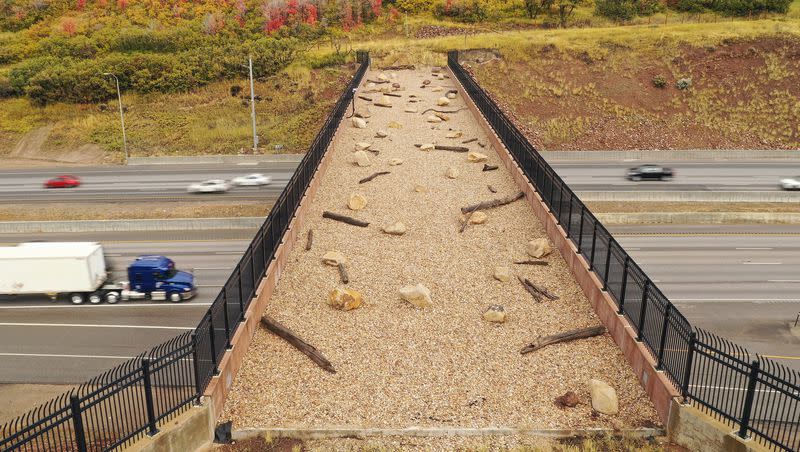New poll taps voters’ views in 8 states on wildlife, water and land

A new poll that tapped at least 400 registered voters in each of the eight Western states surveyed shows residents are putting a top priority on clean air, clean water, conservation of natural spaces and combatting the incidence of extreme wildfires.
Colorado College’s 14th annual Conservation in the West poll found a great deal of agreement — in a nation that has become hyper polarized — over the issue of protecting wild places, preserving wildlife migration corridors and doing more to ensure the availability of a clean water supply.
“There may be a lot that divides voters across the country, but in the West there is nearly universal consensus in favor of conservation,” said Katrina Miller-Stevens, director of the State of the Rockies Project and an associate professor at Colorado College. “Not only do voters prefer conservation when asked how public lands and water should be utilized, but issues involving water, air, land and wildlife are top of mind when they make their voting decisions.”
The poll released earlier this week stressed that a majority of voters view issues like loss of habitat and declining fish and wildlife populations, inadequate and polluted water supplies, microplastics, uncontrollable wildfires, air pollution, loss of pollinators and loss of natural spaces as extremely or very serious problems in their state. Sixty-six percent of voters think the effects of climate change in their state over the past 10 years are significant.
Related
The dreary drought drags on. Here’s how Utah residents want to respond
Flash floods and Utah’s summer monsoon season pose sudden threats
Utah voters know firsthand the impacts of extreme temperature swings, with record setting heat, a region mired in decadeslong drought, threats to water availability and even the impact of too much water with flash floods.
While Utah has enjoyed a mostly temperate wildfire season over the last couple of years, wildfires from out of state are severely impacting air quality.
Related
Curtis wants to help states impacted by neighbors’ wildfire smoke
Five things you should know about Utah’s pollution struggles
Across the board, survey participants in the eight states — 78% — want more emphasis placed on conserving wildlife migration routes, providing highway crossings and limiting more development to protect wildlife habitats, compared to 20% of voters who want more emphasis on economically productive uses of land such as new development, roads, ranching or oil and gas production.
A study last fall found that collisions in 11 Western states cost $1.6 billion a year and in Utah the costs are a staggering $250 million.
In 2018, Utah completed construction of a $5 million wildlife overpass on I-80 in busy Parleys Canyon. Animals were being killed at record rates. Close to two dozen different wildlife species have been documented crossing the bridge that spans the six-lane interstate.
Utah was actually the first state in the country to put in a wildlife crossing with an overpass installed in 1975 on I-15 near Beaver.
Related
The poll found, in fact, that 90% of Utah residents support more wildlife crossings where the roadways intersect with migration corridors and 82% believe more emphasis should be placed on conserving existing corridors rather than disrupting them with new development such as roads, ranching or oil and gas production.
A good majority of Utah residents put high priority on water resources, with 66% of those surveyed saying inadequate water supplies are a serious problem, and another 67% who believe low levels in the state’s rivers are a serious issue.

